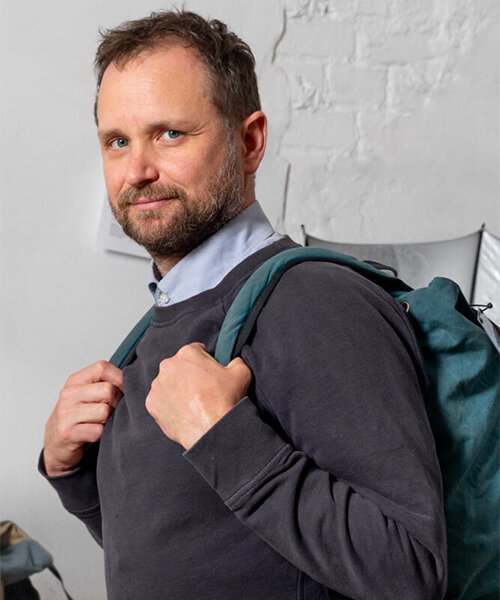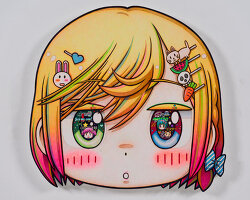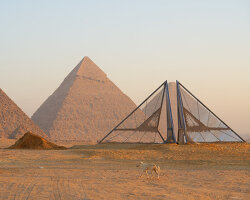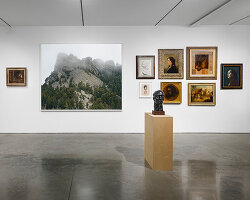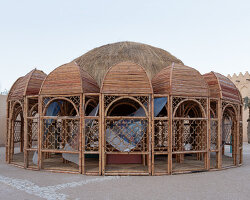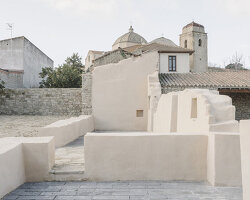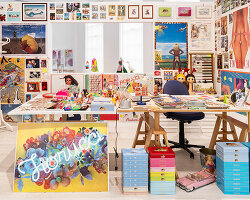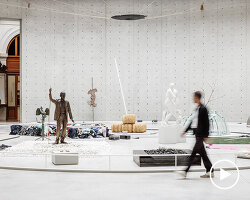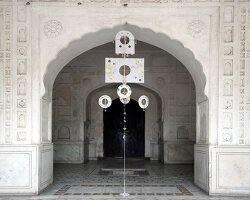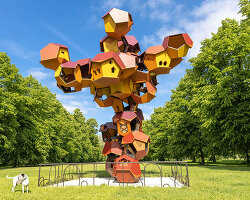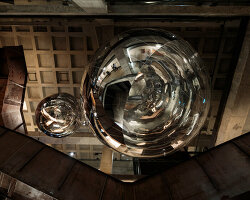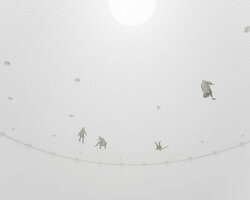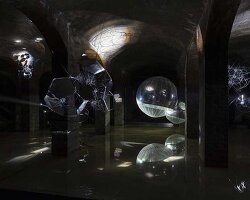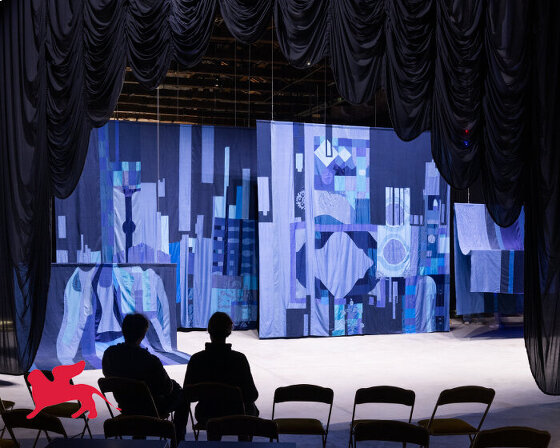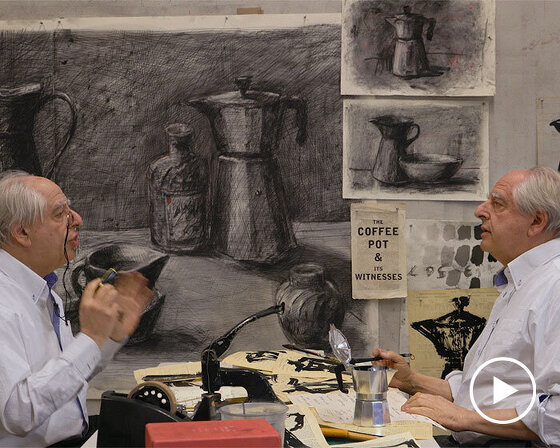‘Web(s) of Life’ takes over the serpentine gallerIES
Tomás Saraceno’s exhibition, ‘Web(s) of Life’, takes over the Serpentine South Gallery until September 10, 2023. With spiderwebs, cloud-like sculptures, video installations, and even a confessional where a spider takes on the role of a priest, the Argentinian artist’s thought-provoking show highlights the urgent need to address the environmental crisis amidst the rapid advancement of technology. By challenging viewers to adopt non-human perspectives and contemplate the profound consequences of local actions, digital memory, and consumer capitalism, the exhibition sparks reflection and calls for a shift in priorities toward sustainability.
To find out more about the artist’s fascination with spiders, his collaborations with indigenous communities, and his views on the climate emergency, designboom spoke with Tomás Saraceno. ‘My hope is that, following the exhibition, people will stop brooming away the spiders from their homes and that spiderwebs become artworks for many. They will learn to coexist harmoniously and appreciate the beauty of things that were previously invisible to them,’ Saraceno tells us. Read the interview in full below to learn more about ‘Web(s) of Life’ and gain insights into Saraceno’s artistic journey.
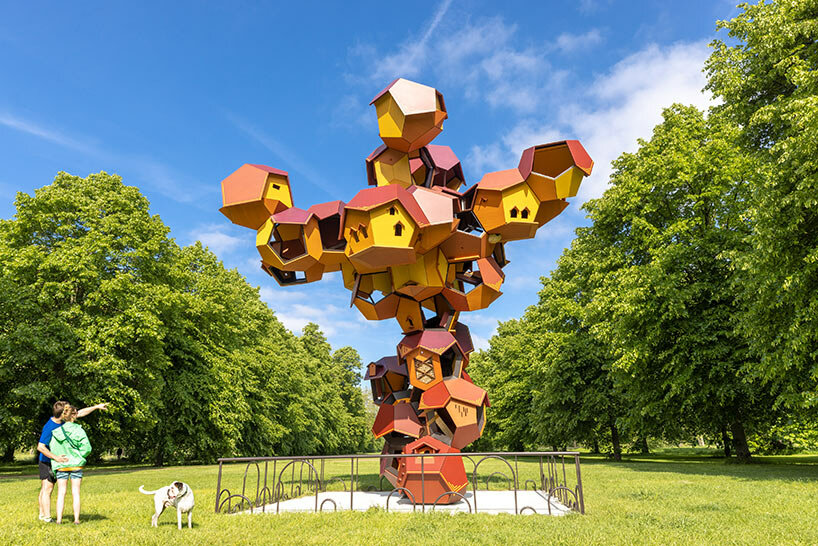
Cloud Cities: Species of Spaces and Other Pieces*, 2023. installation view at Tomás Saraceno in collaboration: Web(s) of Life, Serpentine, London, 2023. photography by Studio Tomás Saraceno
Interview with Tomás Saraceno
designboom (DB): Could you briefly introduce us to the exhibition ‘Web(s) of Life’? How did the ideas of spiders, webs, and even arachnophobia emerge as sources of inspiration?
Tomás Saraceno (TS): The exhibition is almost like a complex, three-dimensional spider’s web, interweaving many interests, people, spiders, animals, and communities that I have worked with over the years. The idea was to find and strengthen the relationships between them, and to think about how we can all live in a world that is currently on the verge of collapse due to the disastrous behavior of some humans. As for arachnophobia, it is a fear that many cultures suffer from, while many others do not and are actually able to appreciate the diversity that still exists on the planet. I think if we acknowledge, respect, and preserve that diversity, hopefully, we might even be able to become arachnophiles who love spiders and recognize the complexity of our relationship with nature.
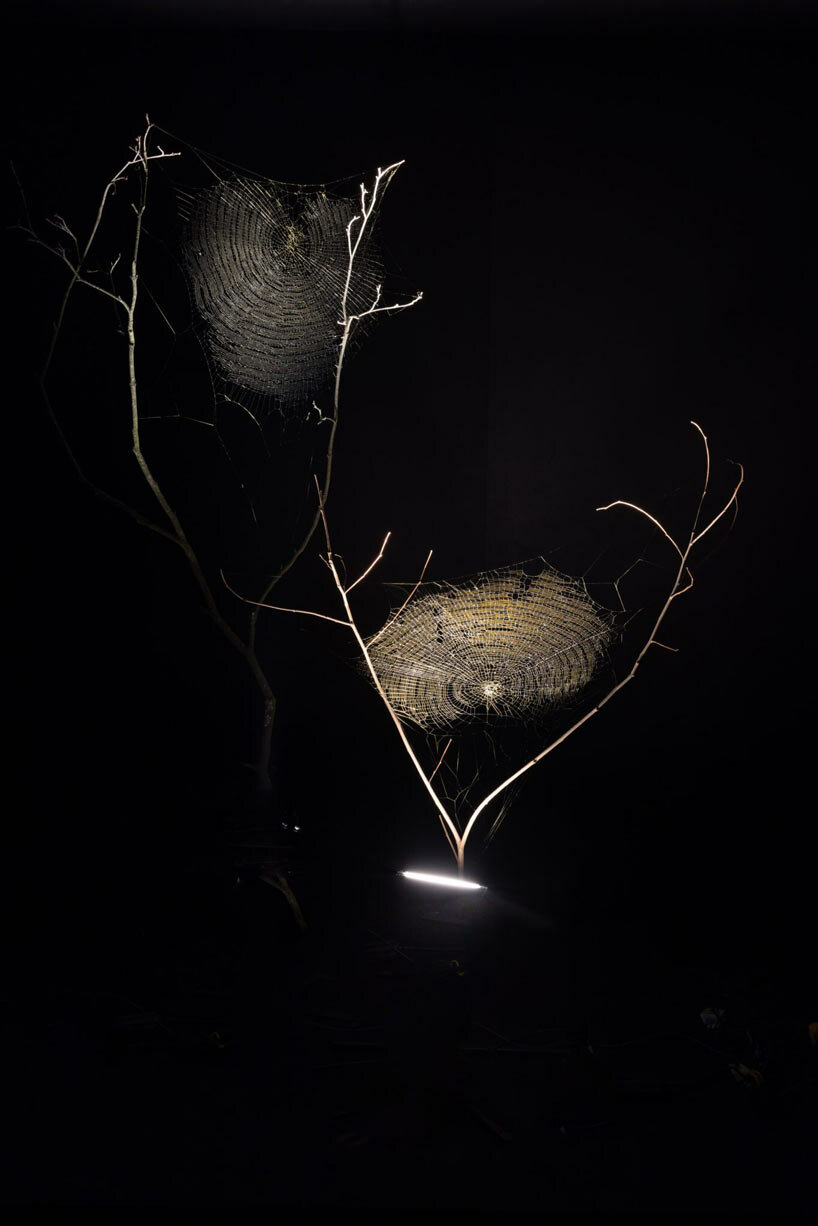
World(ing)WideWeb(s).Life, 2023. installation view at Tomás Saraceno in collaboration: Web(s) of Life, Serpentine, London, 2023. photography by Studio Tomás Saraceno
DB: How does the exhibition propose a more responsible and responsible approach to our actions in relation to other people, interspecies’ cohabitation, and climate injustice?
TS: I think this idea is translated in a physical realm, but also in an almost spiritual form of belief. ‘Web(s) of Life’ draws from the small village of Somié in Cameroon, where the community has a close relationship with spiders, which are considered a source of knowledge. There are actually some people called the spider diviners, that consult the spiders and help the village this way. ‘Web(s) of Life’ allows these diviners to present what they do on their own terms. This is achieved through a webpage that I have asked to be built, allowing them to offer their service, and allow the people who visit their exhibition to ask questions to the spiders, in exchange for income. This is essentially their artwork, their practice, and it’s offered at the exhibition for their own benefit.
Then, from the other side, in a very pragmatic way, the exhibition talks about energy. Not only about the energy that’s measured in kilowatts but also about the social energy that could be generated when communities come together. In terms of more quantifiable energy, however, we have managed to install solar panels on the rooftop of the Serpentine, after endless bureaucratic procedures. Those solar panels generate enough energy for all the electric needs required in the exhibition. Actually, they produce more than what it needs. In addition, some artworks are based on people giving their own physical energy: There are eight bicycles, smaller ones for kids, too. There is also another one that kind of works like a handle, for wheelchair users. As soon as you start to pedal, you hear a manifesto from people of the South for eco-social transition, which tells the story of how unequal this energy transition is and how the communities are suffering from the continuation of maintaining a relationship that is inherited from colonial times.
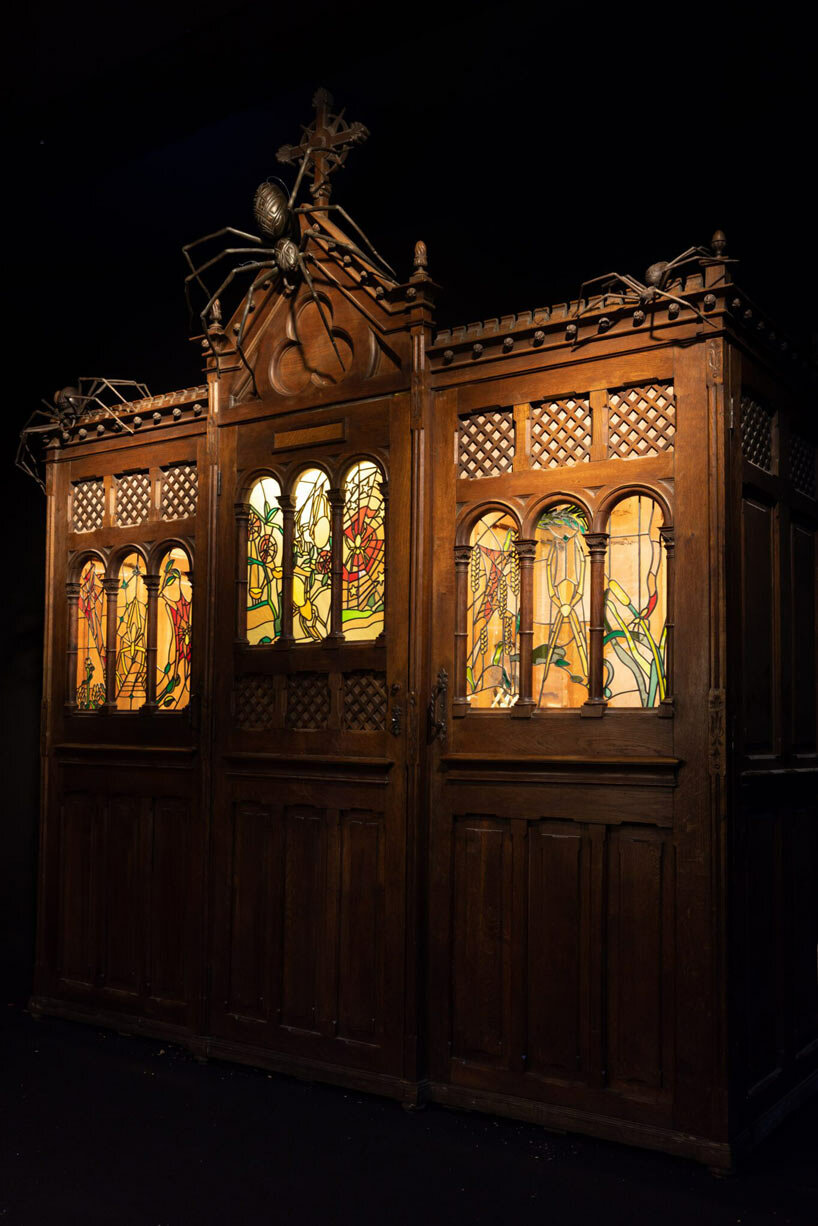
ArachnoAnacróArcano, 2023. installation view at Tomás Saraceno in collaboration: Web(s) of Life, Serpentine, London, 2023. photography by Studio Tomás Saraceno
DB: Your film installation ‘Fly with Aerocene Pacha’ showcases a fossil-free human flight & emphasizes sustainability. Can you talk about your experience with the indigenous communities and their involvement in this achievement?
TS: The manifesto I mentioned earlier aligns with the deep connections I have forged with the Aerocene community and various other communities, including the Salinas Grandes-Laguna de Guayatayoc community. This particular community is located in the northern part of Argentina, within the region known as the ‘Lithium Triangle,’ embracing Bolivia, Chile, and Argentina. The Lithium Triangle is rich in lithium deposits. Currently, the extraction of one tonne of lithium requires two million liters of water. This poses a significant challenge in arid and already water-scarce regions like the Lithium Triangle. Large multinational companies are mining lithium to support the decarbonization efforts of the wealthier global North, where electric cars, like Tesla, are prevalent. These regions have individuals who already own multiple cars and possess an abundance of electronic devices. However, excessive lithium extraction puts the lives of the local communities, who depend on water, at risk.
For me, working with indigenous communities is a constant reminder of the many ways we interact with and exist on this planet. It’s also a self-critique of my own consumption patterns and addiction to certain technologies. It makes me reflect on how I participate in the world and how I can bring about change, starting with myself.

On the 25th of January 2020, 32 world records, recognized by FAI were set by Aerocene with Leticia Noemi Marques, flying with the message ‘Water and Life are Worth More than Lithium’ written with the communities of Salinas Grandes and Laguna de Guayatayoc, Jujuy, Argentina. This marks the most sustainable flight in human history. Fly with Aerocene Pacha, a project by Tomás Saraceno for an Aerocene era, was produced by the Aerocene Foundation and Studio Tomás Saraceno. Supported by Connect, BTS, curated by DaeHyung Lee
(TS continued): There is a disproportion in access to knowledge and resources among different communities. The other day, I came across a statistic: only ten individuals on the planet own more than 50% of the world’s economic power. You know, reaching certain levels of wealth does not necessarily make you happy. It raises questions about how beautifully others live and the amazing social bonds they cultivate with both humans and the surrounding environment.
Indigenous communities have their own cosmologies where every animal has a personal name and mountains are named entities. For example. the concept of Pachamama, a living entity, guides their respect and relationship with everything around them. Their ethos is far removed from the ethics prevalent in other life forms.
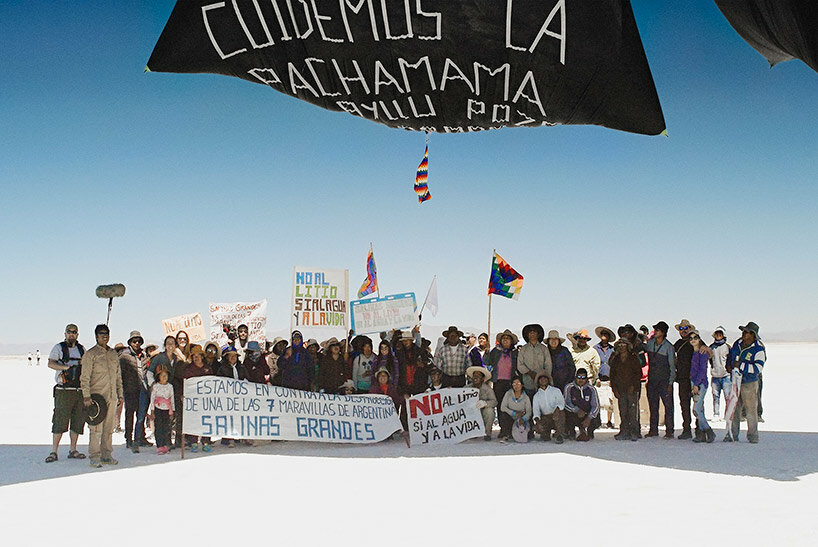
members of the indigenous communities of Salinas Grandes and Laguna de Guayatayoc defend their land against lithium extraction during the Fly with Aerocene Pacha project in January 2020. the signs read: ‘let’s take care of Pachamama…’; ‘we are against the destruction of one of Argentina’s 7 wonders. Salinas Grandes’; ‘no to lithium, yes to water and life’ courtesy of the Aerocene Foundation. photography by Studio Tomás Saraceno
(TS continued): During my time with these communities, I also became deeply fascinated by flying sculptures. While they may appear lifeless, they somehow possess a sense of vitality. Aerocene offers a calmer experience. I hope it can be understood without the need for comparison, appreciating how warm air entering the structure breathes life into it, allowing it to float and become weightless. It’s fascinating to witness this transformation, where the envelope, usually empty, becomes animated by the air’s positive weight of 1.5 kilos. This process relies solely on the Sun’s warmth, enabling it to carry its weight and even more, depending on the conditions. This magical moment has inspired paintings capturing the profound realization that even slight temperature changes can significantly alter our planet within a very short time frame. Everything degrades and transforms over time, but within a few minutes, something can completely metamorphose into a new state.
This idea has piqued the curiosity of the local community because it aligns with their approach to caring for the Earth. It doesn’t require the extraction of resources that later pollute, poison, and harm the planet, as is the case with conventional flight methods involving lithium, hydrogen, or burning fuel. Our project embodies a dream deeply rooted in humanity’s past, where flying was seen as an unattainable feat. Now, it symbolizes a respectful relationship with the Earth, demonstrating that, ultimately, we are all flying together on this planet. We all depend on the Earth’s connection with the sun. What initially seemed like a symbolic journey has transformed into a cosmic one, emphasizing the importance of recognizing and nurturing our interdependence.
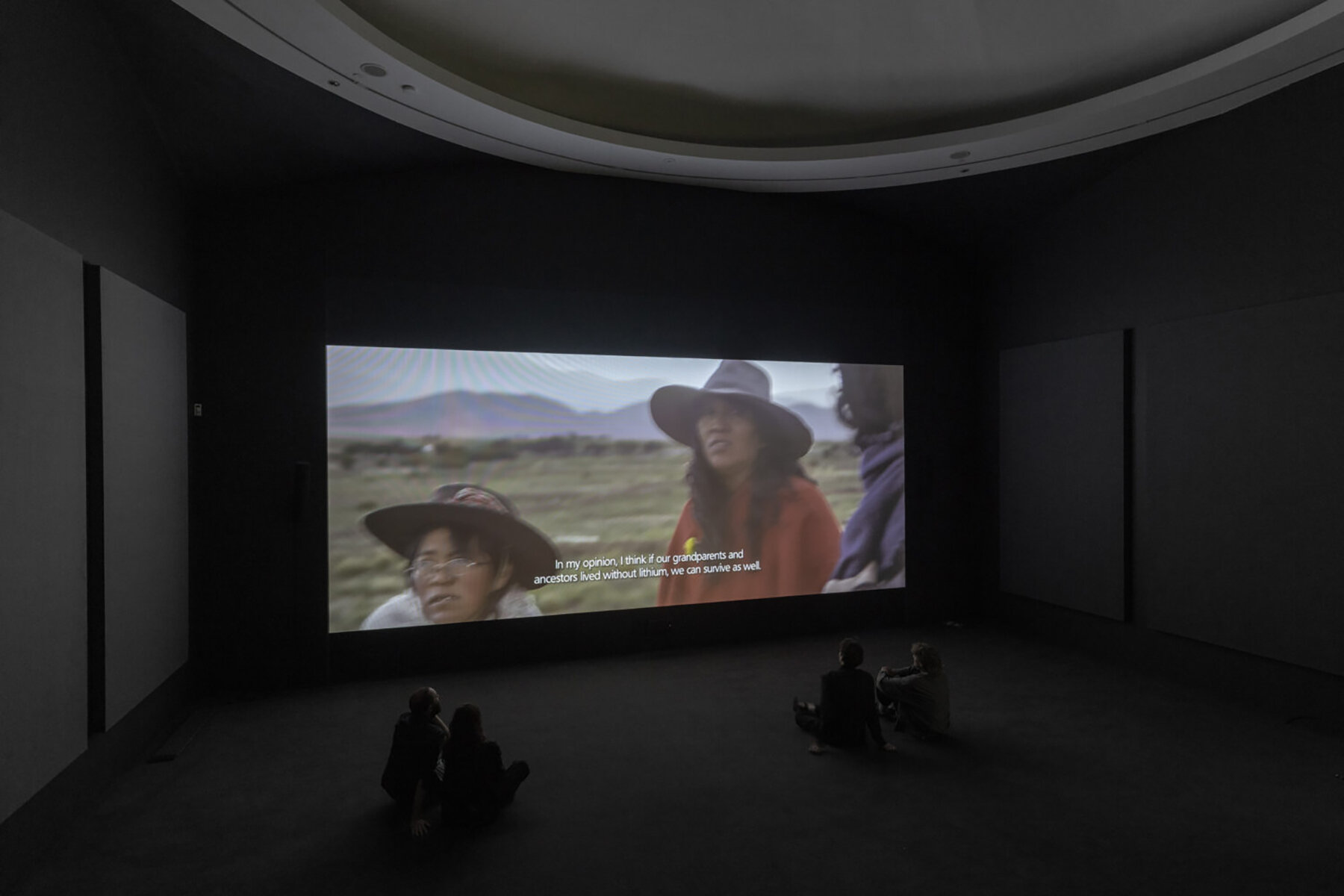
Tomás Saraceno in collaboration: Web(s) of Life, Serpentine, London, 2023. photography by Studio Tomás Saraceno
DB: The exhibition also highlights the decline of the urban wildlife population and its role in ecosystem collapse. How do the cloud-like ‘Cloud Cities’ sculptures address this issue and promote interspecies encounters and cohabitation?
TS: We thought about inviting non-human beings to be a part of the exhibition, as we have been collaborating with spiders for many years. We envisioned the exhibition expanding beyond the gallery space. We were aware that many of the animal pieces species that exist in the park-like setting of the Serpentine Gallery are already on the Red List, and some haven’t been seen for years or even decades. In response, we began building habitats and sculptures, hoping to offer signs of hope and create spaces where these birds can nest. While the Serpentine Gallery is well-known for its architecture pavilion, there haven’t been many pavilions built specifically for non-human beings. We wanted to create a sculpture outside the confines of the gallery, serving as a host for various animals in the park, such as dogs, hedgehogs, squirrels, and different bird species.
This sculpture serves as a reminder of our interdependence and the need to rethink urban architecture. Cities are predominantly designed for humans, and architects need to consider other forms of life. It was a challenging process because architects often have limited knowledge about birds, bees, and butterflies. We embarked on a learning journey together, exploring how to create spaces that entangle and coexist with these different species.
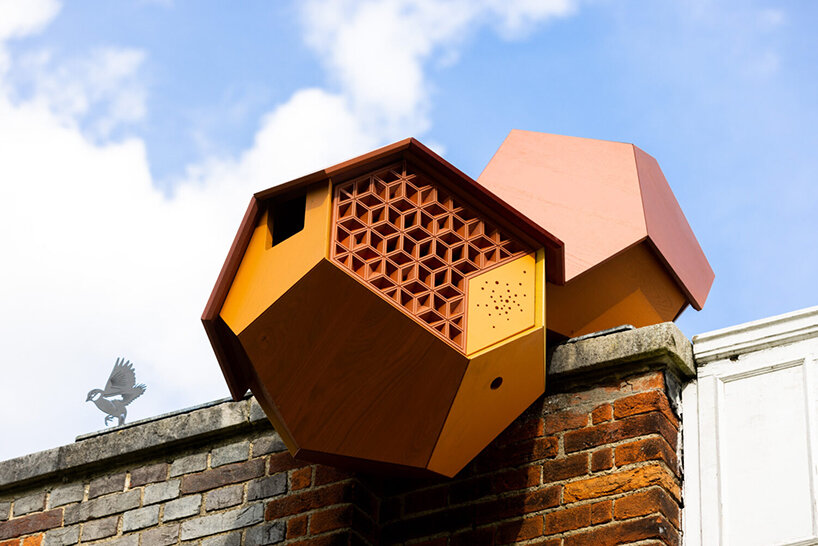
Cloud Cities: Species of Spaces and Other Pieces*, 2023. installation view at Tomás Saraceno in collaboration: Web(s) of Life, Serpentine, London, 2023. photography by Studio Tomás Saraceno
DB: ‘Web(s) of Life’ invites visitors to take the role of participants and encourages them to connect with the surroundings and with their senses and even surrender their phones when entering the exhibition. How do you hope that individuals will approach the exhibition and what do you hope that they will take away?
TS: I think this approach has been quite successful, so far — at least for me. The exhibition is only visible if you surrender your phone at the entrance. So, I left my phone and went to check out how our show was doing, and then, six hours later, I realized that I had left my phone behind. But it was so much better because I could connect with other things which were not on my screen. I have received a lot of messages and emails from people who say they experienced the exhibition without the constant need to take pictures of everything. They find themselves looking at things with a different perspective, a sense of calmness, and without the urge to constantly document. This opens up new ways of experiencing and perceiving things and instills newfound confidence in their own observations. It serves as a reminder that there are alternative ways of engaging with the world.
My hope is that, following the exhibition, people will stop brooming away the spiders from their homes and that spiderwebs become artworks for many. They will learn to coexist harmoniously and appreciate the beauty of things that were previously invisible to them. I also hope that with this exhibition, we can learn to be more responsible towards certain technologies, particularly lithium. It is evident that the Earth’s resources are not sufficient to sustain our current level of consumption. It’s very clear: we have all the statistics and the warnings of scientists and activists. If we really want to achieve an energy transition, decarbonize the atmosphere, and shift from fossil fuels to renewable sources, we must recognize the scarcity of lithium and the importance of conserving resources like water. Without these resources, there is no planet. This exhibition aims to prompt a transformative change in habits, even within the context of how exhibitions themselves are experienced.
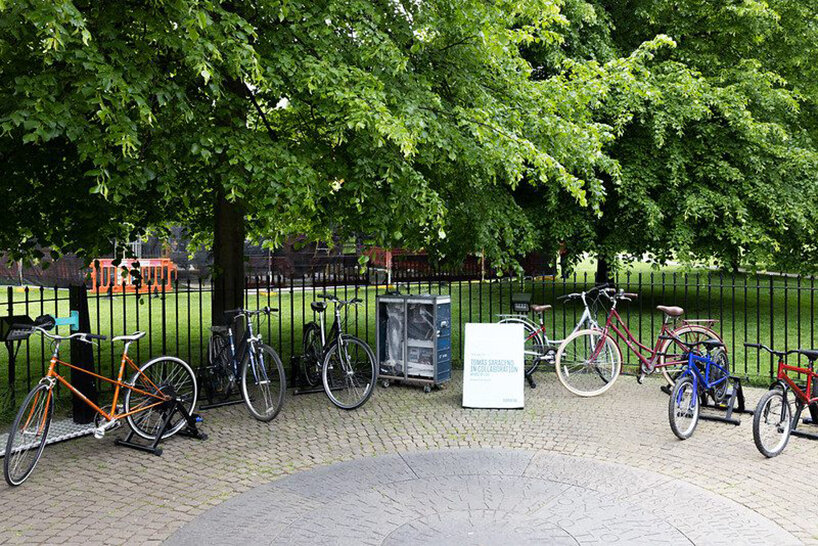
bi-cycles for life-cycles (go as fast as you can, as slow as you must*), 2023. installation view at Tomás Saraceno in collaboration: Web(s) of Life, Serpentine, London, 2023. photography by Studio Tomás Saraceno
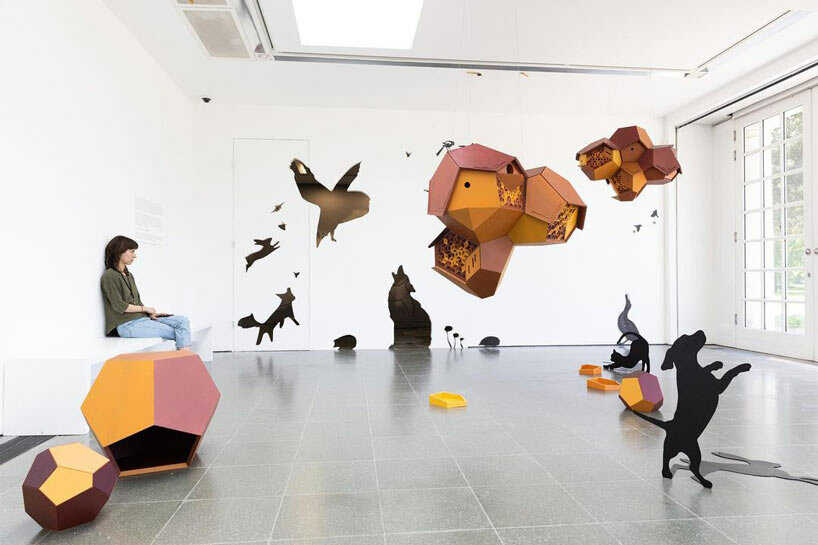
In the shadows, 2023, & Cloud Cities: Species of Spaces and Other Pieces*, 2023. installation view at Tomás Saraceno in collaboration: Web(s) of Life, Serpentine, London, 2023. photography by Studio Tomás Saraceno.
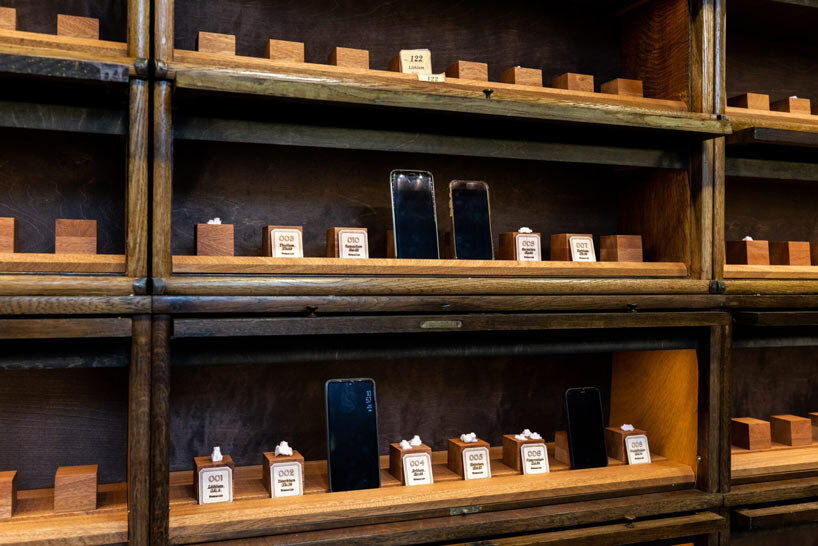
the birds will keep calling you, 2023. installation view at Tomás Saraceno In Collaboration: Web(s) of Life, Serpentine, London, 2023. photography by Studio Tomás Saraceno
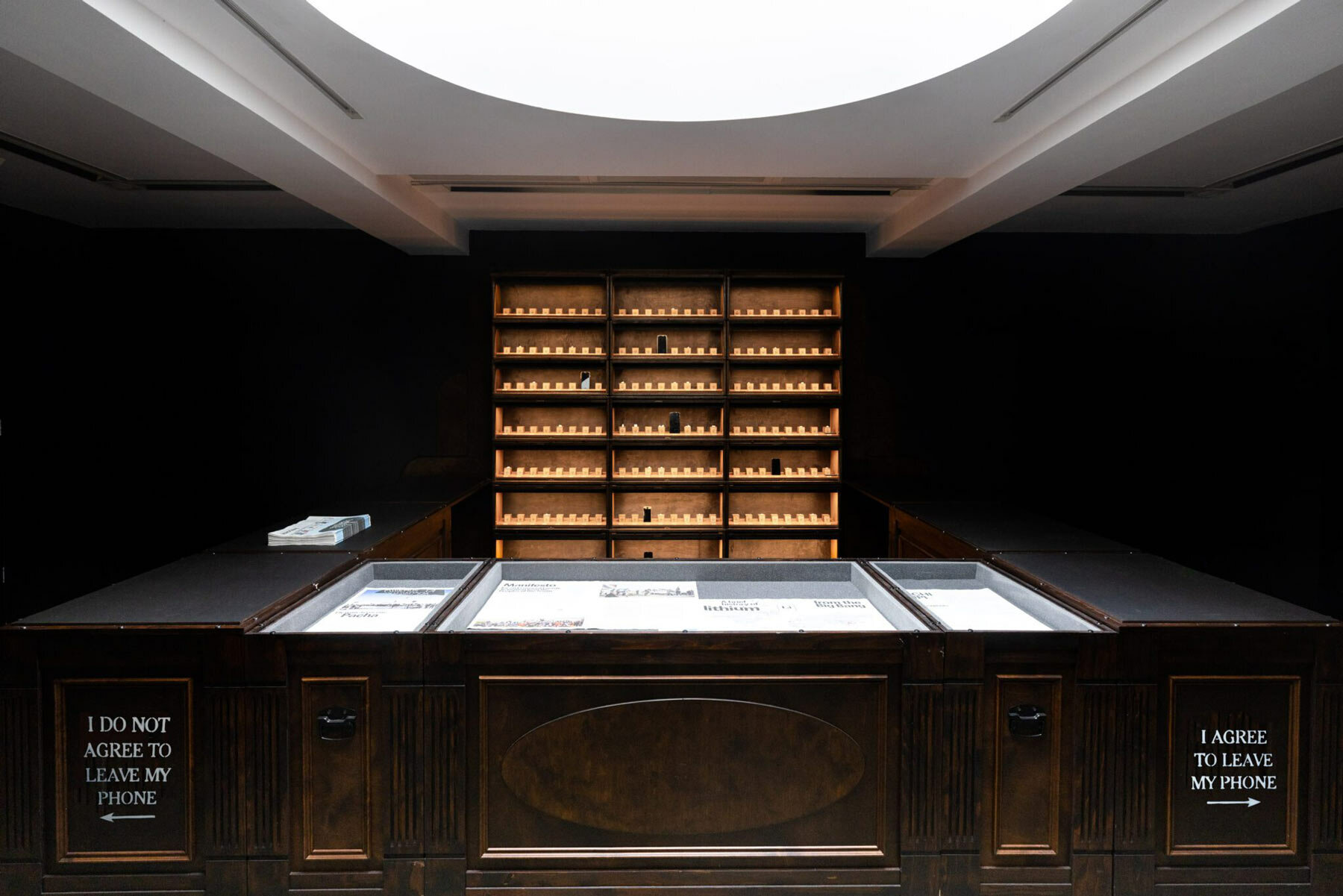
The birds will keep calling you, 2023. installation view at Tomás Saraceno in collaboration: Web(s) of Life, Serpentine, London, 2023. photography by Studio Tomás Saraceno
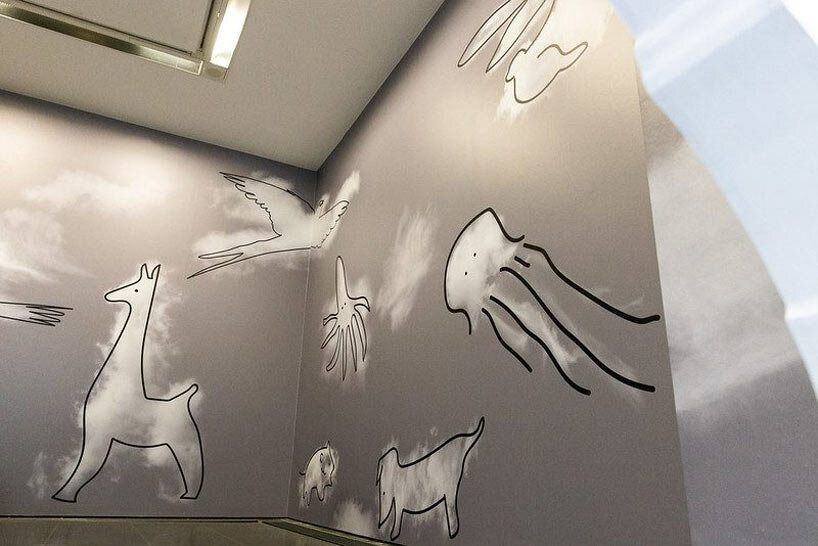
Cloud Imagination, 2023. installation view at Tomás Saraceno in collaboration: Web(s) of Life, Serpentine, London, 2023. photography by Studio Tomás Saraceno
project info:
name: ‘Web(s) of Life’
artist: Tomás Saraceno
location: Serpentine Galleries, London, UK
happening this week! holcim, global leader in innovative and sustainable building solutions, enables greener cities, smarter infrastructure and improving living standards around the world.
art interviews (158)
exhibition design (634)
tomás saraceno (23)
PRODUCT LIBRARY
a diverse digital database that acts as a valuable guide in gaining insight and information about a product directly from the manufacturer, and serves as a rich reference point in developing a project or scheme.
